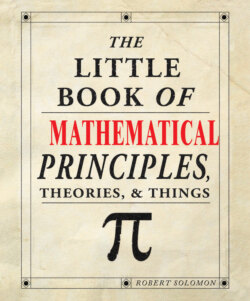Читать книгу The Little Book of Mathematical Principles, Theories & Things - Robert Solomon - Страница 13
6th century BC Greece Pythagoras’s Theorem
ОглавлениеFor a right-angled triangle, the square on the hypotenuse is equal to the sum of the squares on the other two sides.
_______________
Pythagoras is credited with the proof of this most famous theorem in mathematics.
There are several hundred proofs of the theorem. The visual one below is just one example: Take a right-angled triangle with sides a, b, and c, where c is the hypotenuse, the longest side. Make four copies of this triangle. Draw a square of side a + b. The four triangles are arranged inside the square in two ways. In both cases, look at the region left uncovered by the triangles.
In the upper diagram, the triangles are put in the four corners. The region left uncovered is a square of side c, which has area c2.
In the lower diagram, the triangles form two rectangles, at the top left and bottom right. The uncovered region consists of two squares, one of side a, the other of side b. The area is a2 + b2.
The region left uncovered must be the same in both diagrams. Hence c2 = a2+ b2.
The theorem (though probably not its proof) may have been known long before Pythagoras. There are Babylonian clay tablets dating from about 2000 BC, which seem to provide numerical instances of the theorem.
